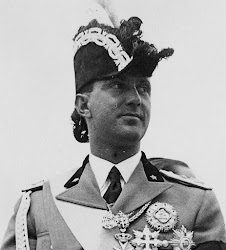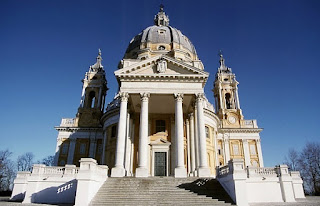President’s daughter gave up career to fulfil state role
.jpg) |
| Laura Mattarella put her legal career on hold to support her father |
The role is normally occupied by the wife of the incumbent head of state but Sergio Mattarella was widowed in 2012, when Laura’s mother, Marisa Chiazzese, passed away.
In those circumstances, it is customary for the position to be filled by another nominated companion. So far, among the 12 individuals who have been elected president since 1948, nine have been accompanied by their wives on official duties. Laura Mattarella is the third daughter to be First Lady, following Ernestina Saragat (1964-71) and Marianna Scalfaro (1992-99).
Laura Mattarella gave up what had been a successful career as a lawyer in order to support her father, a Christian Democrat politician who held ministerial positions under three different prime ministers, when he was elected president in February 2015.
Growing up in Palermo, she attended the University of Palermo to study law, graduating in 1991.
Three years later, she qualified as a barrister and moved to Rome, where she was a practising lawyer for two of the city’s major law firms, specialising in civil and administrative law, before being admitted to the Supreme Court of Cassation in 2010.
As the oldest of Mattarella’s three children and the sister to two boys, Laura was the natural choice to undertake the duties that would have fallen to her mother when her father took up residence in the Palazzo Quirinale.
 |
| The President and daughter with host Amadeus and guests at Sanremo 2023 |
Aged 48, she accompanied her father for the first time on an official public engagement on Republic Day - La Festa della Repubblica - on June 2, 2015, when it is customary for the president to host a reception in the Quirinale Gardens, which are opened to the public for the day.
She went to Vietnam with her father in November of the same year for the first of around 50 official foreign trips or state visits she had made so far.
This is in addition to numerous engagements closer to home. On February 7, 2023, she and Sergio participated in the opening night of the Sanremo Festival 2023 to celebrate the 75th anniversary of the Italian Constitution. It was the first participation of a president and his official companion in the history of the event, which is almost as old as the Republic itself.
Laura Mattarella is married to Cosimo Comella, a cybersecurity expert who is head of information technology at the Italian Data Protection Authority in Rome. They have three children.
 |
| An historic church in the Kalsa neighbourhood |
The University of Palermo’s faculty of law, where Laura Mattarella obtained the degree that set her up for the legal career that she subsequently put on hold, is in the historic Kalsa neighbourhood. The name is based on the Arabic Al-Khalesa, the name by which the area went after it was settled by Arabs in the ninth century. Al-Khalesa was the administrative hub of a city then called Balarm, which remained under Arab rule until it was conquered by the Normans in 1072. Today, it is a lively district known for the Renaissance art in the 15th-century Palazzo Abatellis and the Byzantine mosaics of the 12th-century church of Santa Maria dell’Ammiraglio. The area is well served with restaurants and street food outlets, as well as many shops selling ceramics and items in wood. Kalsa comes alive at night with plenty of bars catering for students and other young people.
 |
| The Palazzo Quirinale has been home to popes, monarchs and now the President of Italy |
The Palazzo Quirinale, which since 1946 has been the official residence of the President of Italy, was designed by Ottaviano Mascherino in the 16th century. It had previously been home to monarchs and popes.The Quirinale neighbourhood is located on one of Rome's seven hills. Just a short walk from the Palazzo Quirinale are the iconic Trevi Fountain, one of Rome's most famous landmarks, the ruins of the Baths of Constantine, the last great thermal complex built in imperial Rome, and the Piazza and Palazzo Barberini, built by Bernini and Maderno. Also in the neighbourhood is Bernini’s church of Sant'Andrea al Quirinale, which is regarded as one of the most elegant examples of Baroque architecture in the city, and Borromini’s masterpiece, the church of San Carlo alle Quattro Fontane.
Also on this day:
1740: The birth typographer and printer Giambattista Bodoni
1907: The death of poet Giosuè Carducci
1918: The birth of designer Achille Castiglioni
1935: The birth of vocalist Edda Dell’Orso
1970: The birth of footballer Angelo Peruzzi
1979: The birth of motorcycle racer Valentino Rossi
_(cropped).jpg)






